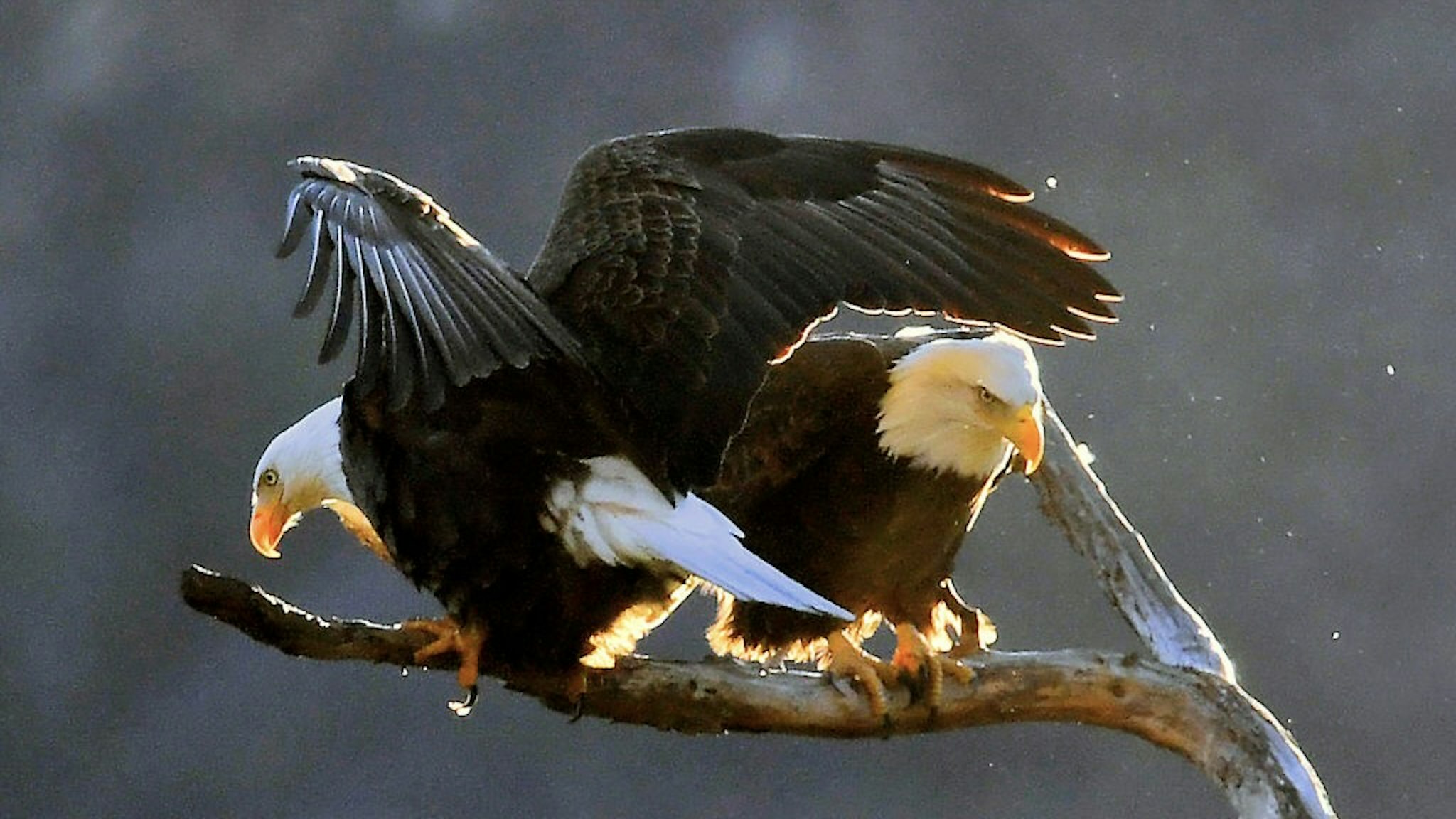
— News and Commentary —
Study: Nearly Half Of Bald Eagles Have Lead Poisoning
According to a new report, almost half of the bald eagles in the United States have lead poisoning.
The data comes from a new study published in the journal Science on Thursday. It looked at lead exposure in 1,210 eagles across 38 states, with 620 live eagles. It discovered that “more than half of the adult birds had bone lead concentrations above 10 parts per million, which pathologists define as chronic lead poisoning,” per National Geographic.
“Led by scientists from the U.S. Geological Survey, Conservation Science Global, Inc., and U.S. Fish and Wildlife Service, researchers evaluated lead exposure in bald and golden eagles from 2010 to 2018,” Phys.Org reported.
According to a portion of the study in Science, “We detected unexpectedly high frequencies of lead poisoning of eagles, both chronic (46 to 47% of bald and golden eagles, as measured in bone) and acute (27 to 33% of bald eagles and 7 to 35% of golden eagles, as measured in liver, blood, and feathers).”
“Studies have shown lethal effects to individual birds, but this new study is the first to show population-level consequences from lead poisoning to these majestic species at such a wide scale,” said Anne Kinsinger, USGS Associate Director for Ecosystems.
“Nearly every single eagle we tested had some lead exposure over the course of its life,” said co-author Todd Katzner, a wildlife biologist with the U.S. Geological Survey based in Boise, Idaho.
“This is the first time for any wildlife species that we’ve been able to evaluate lead exposure and population level consequences at a continental scale,” said Katzner. “It’s sort of stunning that nearly 50% of them are getting repeatedly exposed to lead.”
“Science has known for many years that birds of prey, especially scavenging birds of prey, are exposed to lead and sometimes present at a veterinary hospital or rehabilitation facility with substantial lead poisoning,” Katzner said.
Lead poisoning usually happens when an eagle eats lead ammunition pieces that are inside of an animal. Lead collects in the animals’ bones over time.
National Geographic noted, “Of 620 live birds, 28 percent of bald eagles and nine percent of golden eagles had blood lead concentrations indicative of acute poisoning, potentially enough to cause death. But the vast majority of these eagles had blood levels above five micrograms per deciliter, the threshold that the World Health Organization categorizes as a level of concern in people.”
“The study’s modeling shows that lead reduces the rate of population growth for both of these protected species. That is not as impactful for bald eagles since this endemic species population is growing at 10 percent per year across the U.S. In contrast, the golden eagle’s population is not as stable, and any additional mortality could tip it towards a decline,” said Brian Millsap, U.S. Fish and Wildlife Service National Raptor Coordinator and co-author.
The Associated Press reported, “Lead is a neurotoxin that even in low doses impairs an eagle’s balance and stamina, reducing its ability to fly, hunt and reproduce. In high doses, lead causes seizures, breathing difficulty and death.”
NBC News reported, “The researchers modeled how the poisoning would affect the population growth of these species, finding that lead would reduce bald eagles’ growth rate by nearly 4 percent each year. Golden eagles would see a reduction of nearly 1 percent.”
In the past, bald eagles have been near extinction. In the early 1960s, there were only 417 breeding pairs remaining in the country. According to NBC News, the bald eagle was among the initial species to be determined to be endangered.
However, due to overall protection efforts, the birds started to regain their footing across the nation. In 1972, DDT was banned, which was an agricultural insecticide that had contributed to bald eagle eggshell thinning, causing reproduction problems.
By 2007, the federal government took the bald eagle off of the list of threatened or endangered species.
“Last winter, the U.S. Fish and Wildlife Service estimated bald eagle populations had soared to include 71,400 nesting pairs and more than 316,700 individual birds,” per NBC.
The golden eagle has not made such a comeback as there are currently around 30,000 of the birds in the United States.

